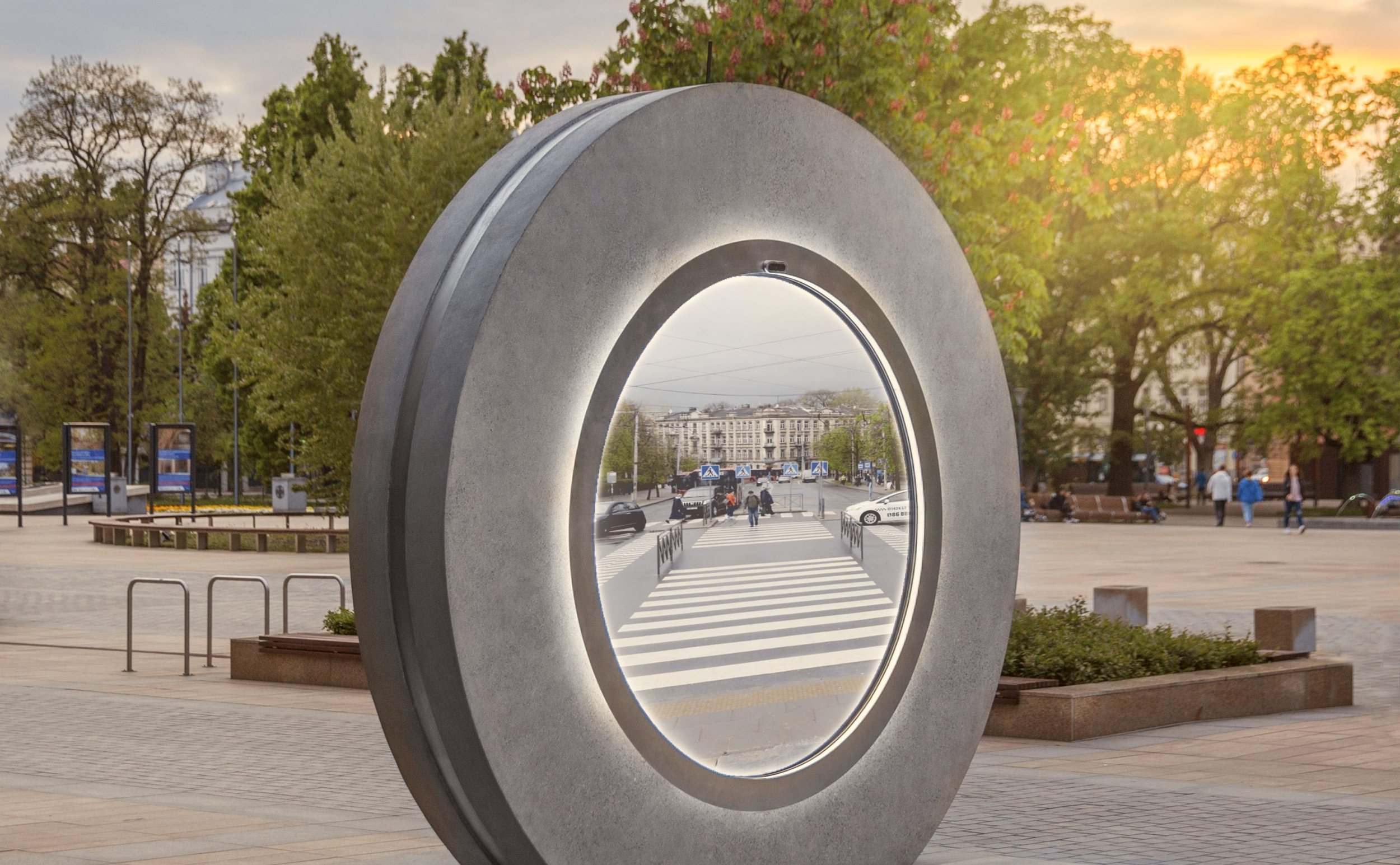A new sculpture going live on Wednesday in the Flatiron South Public Plaza in New York is not your typical artwork. It combines technology, sociology, anthropology, and art to let people interact with one another in real-time in two places. In this case, it’s between New York City and Dublin.
The Portal itself is an impressive piece of work, weighing in at 3.5 tons, with a footprint of around 11.5 by 11.5 feet. Portals.org, the organization behind the project, did not want to share the hardware specifications beyond the size of the video screen, which is around 8 by 8 feet, preferring to maintain the idea that it’s a portal as opposed to a screen.
As the organization describes them, “Portals are an invitation to meet fellow humans above borders and prejudices and to experience our home — planet Earth — as it really is: united and one.” They were originally conceived by Lithuanian entrepreneur Benediktas Gylys.
While the concept is cool, the underlying software technology that drives it comes from Video Window, a British company that originally created software and hardware for the purpose of connecting employees in remote locations — at home or in other offices — with an always-on connection. In this case, they have taken the same concepts and applied them to the Portal.
Video Window CEO Daryl Hutchings says that the Portal needs many of the same features as a business, with a few caveats. “Any videoconference software is basically designed for scheduled meetings, so you schedule a time, you click on the link and then it lasts for X amount of time,” Hutchings told TechCrunch. “So that’s all well and good when it’s a scheduled call, but obviously when you’re doing an always-on connection like the Portal, there’s inevitably connection problems.”
When those problems crop up, most software eventually gives up, but Video Window is designed to help solve the connection issues via their APIs and keep going, which is essential for this use case.
Another major consideration for this always-on technology is making sure that it’s secure. You don’t want people being able to take control of the connection, and Video Windows software also is helping in that regard.
Nicolas Klaus, head of partnerships at portals.org, says that security was a key consideration for the city before it would agree to have one installed. “The cities we work with, including New York, are concerned about data security. Can we ensure privacy of the data?” That’s something that Hutchings says is built into the software, so that it’s not possible to “Zoom bomb” a Portal as we saw in the early days of the pandemic.
Klaus said the fact that they are working with Video Window, which counts many well-known companies as customers, has helped when working with governments to put their minds at ease around security. “That Video Window has been working with very established clients including Netflix, Apple, and SAP and some of the biggest companies, that also take a lot of care about data security, has also been really helpful,” he said.
Governments are sometimes concerned about having an always-on connection to another country, but portals.org has been building these installations since 2021. It started with a Portal connecting Vilnius, Lithuania, and Lubor, Poland, and so far they have been able to effectively resolve these issues with participating countries.
“And simply the experience that over the past three years we have been able to maintain a 24/7 live stream almost without interruptions in other cities gave a lot of confidence to Dublin and New York City to join the network,” Klaus said.
